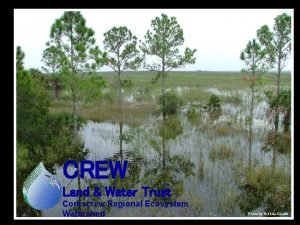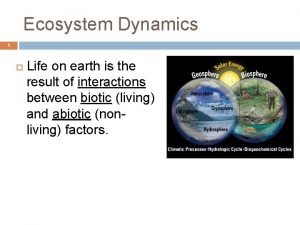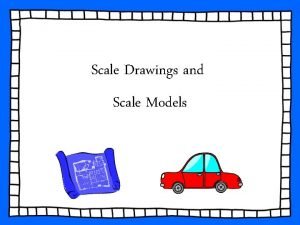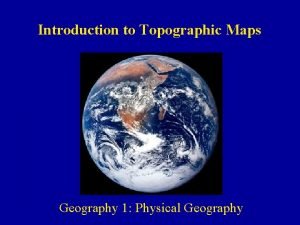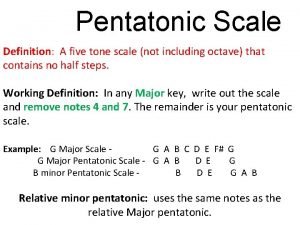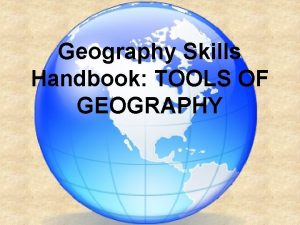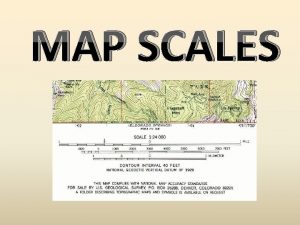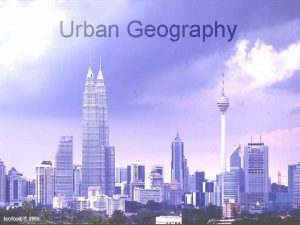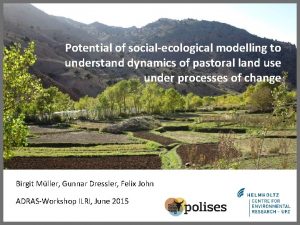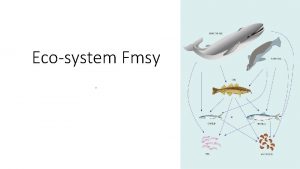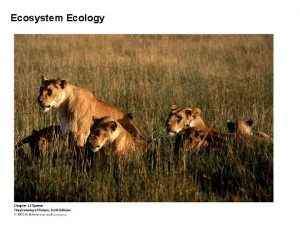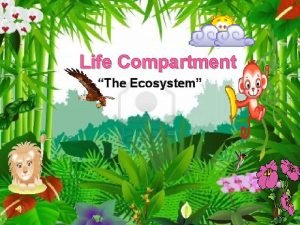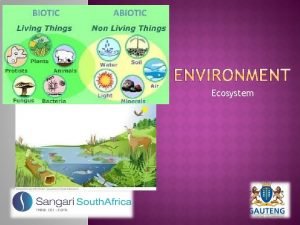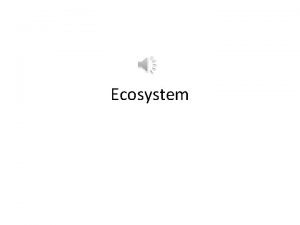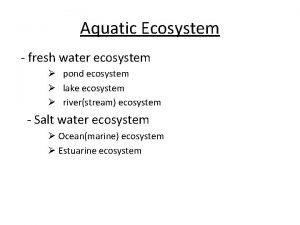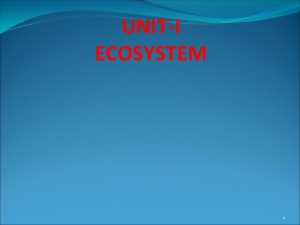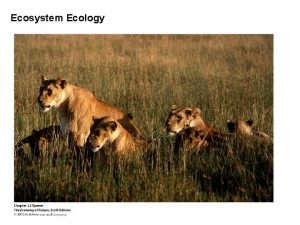Socialecological dynamics at a regional scale Ecosystem dynamics














- Slides: 14

Social-ecological dynamics at a regional scale

Ecosystem dynamics at regional scales are social-ecological dynamics Detecting vegetation change at a regional extent associated with grazing management Ranch sustainability and land use change is inherently regional

Desert grassland environments of JRN at a regional scale q q Extensive livestock production Wilderness Renewable energy production Military uses Most land area (57%) is co-managed by ranching enterprises and federal (Bureau of Land Management; BLM) and state government

Drivers of ecosystem change at regional scale Drivers Climate change Livestock management by family ranchers with federal oversight Extensive restoration via shrub removal by federal agencies Interacting with Gradients in topoedaphic variables Existing land uses Specific landowners Proximity to alternative land uses Land use change from rangeland/wildland to urban uses (private land or federal land disposal) Tests using long-term data collected by management agencies and geospatial variables

Obj. 6 (a) Is ranch sustainability related to factors that promote ecological resilience?

Changes in ownership of ranches associated with transfers of public lands allotments (Bureau of Land Management) Records from 1937 -2008 (71 yrs) for 432 grazing allotments in southwest New Mexico Repeated sales –reduced investment, acute episodes of overgrazing Transfer to heirs –continuity of management, social-ecological resilience

Predictions in spatial regressions ↑ sale transfers ↓ intrafamily transfer Soil: % of allotment area with sandy soils Climate: low zonal mean annual rainfall (1981 -2010) Impermanence factors (anticipation of negative impacts): Proximity to cities (land disposal, vandalism) Proximity to the US-Mexico border (militarization, violence)

Sale transfers Best model included soil, impermanence, and climate Bestelmeyer, Skaggs, Browning, Williamson, Wojan, in prep

Intrafamily transfers Weaker model, but largely driven by soil

Relationship to ecological conditions Χ 2=6. 56, P=0. 01 Grass cover negatively related to # of sales

Implications Ranch sustainability can be predicted by the same biophysical factors governing ecological resilience Location relative to cities and the US-Mexico border is also important High rates of sale transfers may be related to future land use change, particularly energy development

Allocations for Solar Development q Not available: e. g. , wilderness q Excluded: resource conflicts q Variance areas: utility-scale solar energy development possible

Predicted allotment turnover (71 yr) Allotments most vulnerable to solar development have highest predicted rates of sale transfers 3 2. 5 2 1. 5 1 0. 5 0 <5% 5 -50% > 50% % of allotment subject to variance Suggests a relationship between ranch sustainability, biophysical factors, and future land use change

Future plans 1. More detailed land use and land use change mapping, currently exploring approaches 2. Continued engagement with BLM to detect new land use trends and study restoration effects (next talk)
 Wawa menu
Wawa menu Dynamics 365 ecosystem
Dynamics 365 ecosystem Individual population community ecosystem
Individual population community ecosystem High school grading scale
High school grading scale Scale up and scale out in hadoop
Scale up and scale out in hadoop Eg subject code
Eg subject code What is the scale of a drawing
What is the scale of a drawing Introduction to topographic maps
Introduction to topographic maps Scale out architecture in big data analytics
Scale out architecture in big data analytics Understanding scale drawings
Understanding scale drawings Scale tones
Scale tones Large scale vs small scale map
Large scale vs small scale map Inner scale outer scale protractor
Inner scale outer scale protractor Construct a diagonal scale of rf 1/4000
Construct a diagonal scale of rf 1/4000 Scale in a map definition
Scale in a map definition
